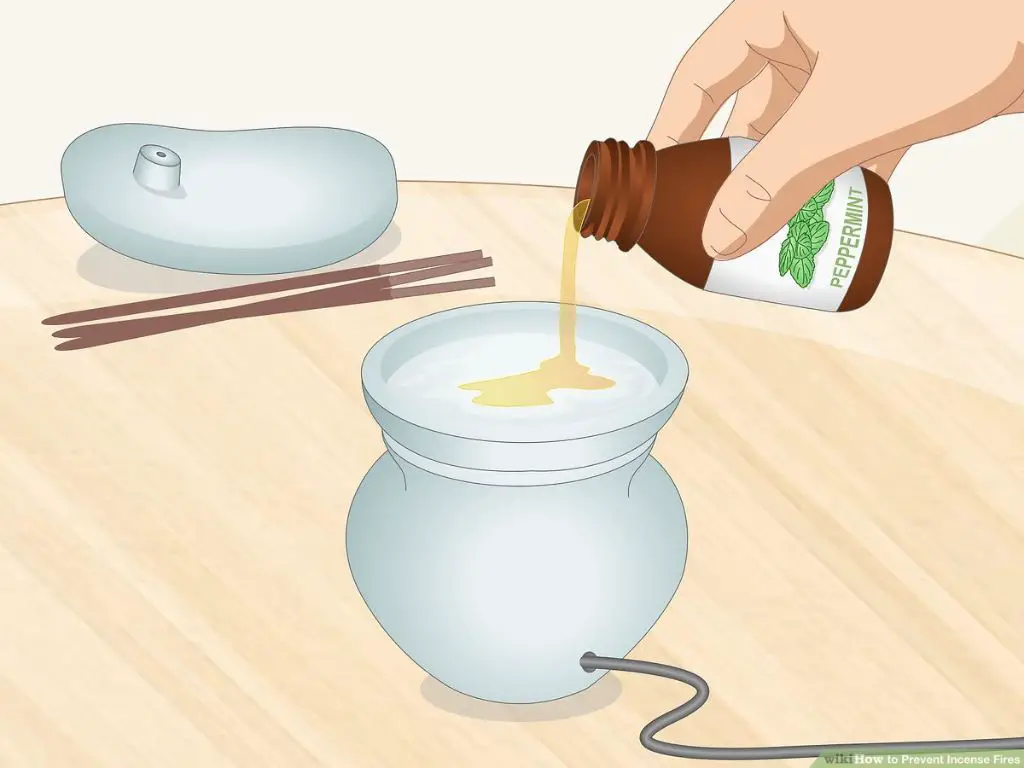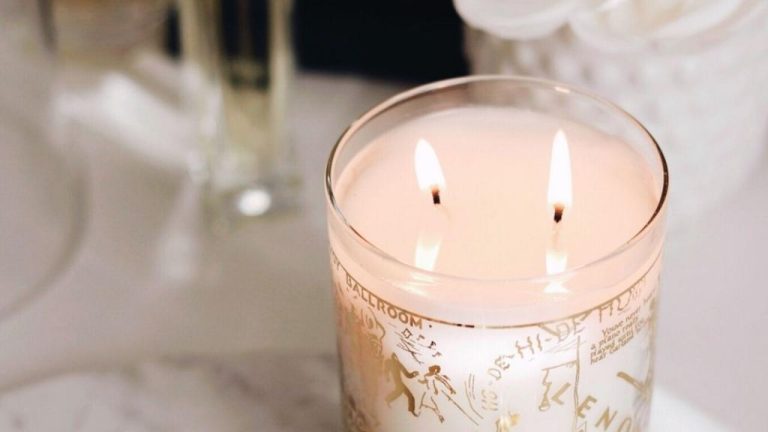What Makes A Good Incense Holder?
An incense holder, also known as an incense burner or censer, is a vessel made for holding incense as it burns. Incense holders serve several purposes and provide various benefits:
Incense holders contain the burning incense materials, allowing the fragrant smoke to waft into the air while keeping the ashes safely contained. This helps prevent fires and messes.
They make it easy to move burning incense around and place it where desired. The smoke can be directed as needed for ceremonial or spiritual uses.
Incense holders come in beautiful designs and materials, adding visual interest and artistic flair. They can reflect cultural, religious, and personal significance.
Burning incense in holders allows people to enjoy the calming fragrance. The scent and smoke are thought to have meditative, cleansing, and healing properties by some traditions.
Overall, incense holders provide a practical and decorative means to safely harness the aromatic power of burning incense.
Materials
Some common materials used for incense holders include wood, ceramic, and metal. Each material has its own advantages and disadvantages.
Wood is a popular choice as it’s an affordable and accessible material. Wood holders are lightweight and portable. However, wood is flammable and can burn or scorch if the incense is not properly contained. Types of wood like cedar or sandalwood can also impart their own aromatic scent.
Ceramic and stoneware are excellent non-flammable and heat resistant choices. Glazed ceramic holders are impervious to burning. Unglazed terracotta also works well. Downsides are that ceramic can chip or crack if dropped. Ceramic holders also tend to be more expensive and fragile than wooden ones.
Metals like brass, copper, and iron make decorative and durable holders. Intricate metalwork holders often become treasured heirlooms. On the downside, some metals can get very hot. Metal holders should usually be set on heat-proof surfaces. Depending on the metal, they can also develop patinas or need occasional polishing.
Overall, non-flammable materials like ceramic, stone, or metal tend to be safest. Wood can work as long as the incense itself is properly contained from contact with the sides. When selecting a material, consider factors like safety, longevity, aesthetics, and budget.
Size and Shape
Incense holders come in a variety of shapes and sizes to suit different needs. Some popular shapes include boxes, stands, bowls, and waterfall or tiered styles.
The ideal size depends on factors like how much incense you burn at a time and the space you have available. Smaller holders around 3-5 inches wide work well for burning individual sticks or cones. Larger holders around 5-8 inches can accommodate multiple sticks or a longer burn time. Extra wide holders over 8 inches are great for filling a room with fragrance.
For stick incense, oblong rectangular holders let the ash fall easily as the stick burns down. Round, curved holders work best for cone incense to cradle the cone as it burns. Bowls collect falling ash while allowing fragrance to waft upwards. Tiered waterfall holders provide separate spaces for multiple sticks.
Consider portability as well – compact holders are great for travel while heavier stone or ceramic holders are ideal for altar spaces and meditation. Ultimately choose a shape and size based on your personal preferences and incense burning needs.
According to various Reddit users, the most popular incense holder widths tend to be around 3.5-5 inches wide as this accommodates most standard stick lengths (source). Wider holders around 5-8 inches work well if you want to burn multiple sticks at once or prefer a holder with a larger footprint.
Design Elements
When choosing an incense holder, one major consideration is whether to select an ornate, intricate design versus a minimalist, simpler style. Many incense holders feature elaborate decorative motifs, especially those originating from places like Japan, China, and India where incense burning has deep cultural roots. These often incorporate spiritual symbols like the lotus flower, yin-yang, Buddha figures, or Hindu gods. Intricately carved wood or molded clay holders with gold accents fall on the more ornate end of the spectrum.
On the other end, minimalist incense holders prioritize function over form. These have sparse embellishments and clean, geometric shapes. Materials like glass, metal, or stone are formed into simple cylinders or cubes to hold the incense. The austerity highlights the incense itself rather than drawing attention to the holder. Those seeking a modern, uncluttered look tend to prefer this minimal style.
Ultimately the choice comes down to personal preference and what best suits the intended space. Both ornate and minimal holder designs have merit depending on one’s individual sensibilities and decor context.
Sources:
- https://asayujapan.com/collections/incense-holder
- https://www.pinterest.com/kinobjects/stick-incense-holders-burners/
Safety
When using incense, safety should always be a top priority. According to this source, you should never leave burning incense unattended and make sure all ashes and materials are completely cold before discarding. Some tips for safely using incense include:

- Use an incense holder designed for stability.
- Place the incense holder on a fireproof surface away from flammable objects.
- Keep the incense holder at least 1 foot away from anything that could catch fire.
- Make sure the incense holder cannot tip over easily.
- Look for incense holders made of non-flammable materials like stone, glass, or metal.
- Avoid incense holders made of flimsy materials.
- Consider using self-contained incense holders that catch falling ashes.
- Never leave burning incense unattended even for a minute.
- Keep incense away from drafts that could spread embers.
- Have a bowl of sand or water nearby to fully extinguish ashes.
- Make sure incense is completely out before going to bed.
Taking proper precautions with incense holding and placement is crucial for avoiding fires. Focus on stability of the holder and using fireproof, non-flammable materials in the area.
Placement
One key factor in using an incense burner is finding the right placement for it. You’ll want to place your incense holder in a stable spot where it won’t easily be knocked over. Many people place their holders on shelves, countertops, nightstands, or other surfaces at an easy height to access.
It’s also important to avoid drafts when placing your incense burner. Incense smoke can easily be blown out by vents, open windows, fans, or other sources of moving air. Find a spot that’s out of the way of drafts in order to keep the incense burning properly and allow the fragrance to spread. Corner spots in a room often work well.
Test out a few different spots in your home to find the ideal placement for your incense burner. The right placement will keep the holder secure while also taking advantage of calm air flow in the room.
Maintenance
Proper maintenance is crucial for keeping an incense holder clean and preventing damage. Incense ash and dust can build up over time, so it’s important to regularly clean the inside of the holder. The frequency of cleaning depends on how often it’s used, but a good rule of thumb is to clean an incense holder once or twice a month.
To clean an incense holder, allow it to completely cool after use. Then use a soft brush, like a paintbrush, to gently brush out any ash or debris from inside the holder. You can dip the brush in mild soap and water to help loosen stuck-on residue. Avoid using anything abrasive that could scratch the surface. According to Kin Objects, rubbing alcohol can also help dissolve oil-based residue.
For ceramic, glass, or metal holders, they can occasionally be washed with warm soapy water and dried thoroughly afterward. Wood holders should be cleaned more delicately with a dry brush to avoid water damage. Backflow incense burners require extra care when cleaning to avoid clogging the small inner ports.
Preventing damage is also key for longevity. Allow incense holders to fully cool before handling or cleaning. Avoid knocking over holders while burning incense. Store safely when not in use, away from high traffic areas. Place on a heat resistant surface, not directly on fine wood that could scorch. With proper regular care, an incense holder can last for many years of enjoyment.
Aesthetic Appeal
Incense holders can be visually striking decorative pieces that elevate a room’s style. The aesthetic appeal of an incense holder comes from its cohesive integration into the surrounding decor as well as interesting visual details in its own design.
An incense holder that matches or complements the overall style of a space looks intentional and polished. For example, an ornate antique brass holder would suit traditional decors, while a simple unglazed ceramic style could fit well in a minimalist setting. Consider the room’s existing color scheme, materials, and textures when selecting an incense holder so it feels harmonious. The holder’s size and shape should also fit the scale of its surroundings.
Visually compelling incense holders feature decorative accents that catch the eye through intricate patterns, dynamic shapes, or striking glazes and finishes. Handcrafted holders often display the most artistry. Details like carved designs, pierced cutouts, or molded textures add visual interest. Decorative bases, embellishments, and incorporated found objects can make each holder unique. When lit, the smoke and glow of the incense itself creates captivating movement and scents to appreciate.
By choosing an incense holder that aligns with the room’s decor style and offers inspired design details, the holder becomes an attractive decorative accent that elevates the overall aesthetic.
Cultural Significance
Incense holders have long held ritual and cultural importance across many religions. In Christianity, the incense burner is known as a thurible or censer. According to this article, burning incense in a thurible represents the zeal of Christian faith. In Catholic masses, incense is burned as a symbol of prayers rising to heaven. In Buddhism, incense burners are used in meditation and ceremonies to create a tranquil environment.
Different regions also have their own incense traditions. In India, agarbatti (incense sticks) and dhoop are burned for spiritual ceremonies and home rituals. Japanese incense developed into an artform known as kōdō. China and Tibet also have a long history of incense culture used in ancestor worship and purification rituals. Ancient Mesoamerican cultures like the Aztecs used copal incense in ceremonies and burial rites. Overall, incense holders have provided an important vessel for cultural and religious incense traditions worldwide.
Conclusion
The right incense holder can enhance the effects of incense, while making sure the fragrance spreads evenly and safely. Choosing one made of heat-resistant materials that doesn’t tip easily is key for safety. Vents, a wide base, and an open design allow incense smoke to circulate. An attractive holder that fits with your décor makes incense burning into an appealing ritual. Carefully consider shape, size, materials, design elements, placement and maintenance when selecting an incense holder.
When shopping for an incense holder, avoid fragile materials and top-heavy shapes. Look for stability and ventilation. Stylized holders that are decorative or have cultural meaning make incense burning more meaningful. Clean your holder regularly to remove ash and residue. With a quality incense holder that you tend carefully, you can enjoy incense safely.






